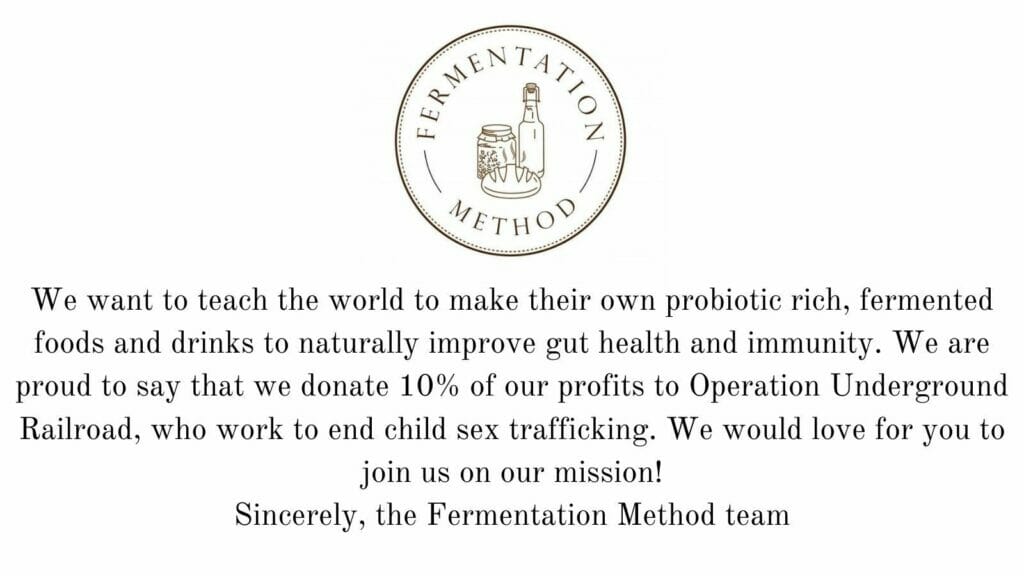The Wonderful World of Fermented Foods: Unlocking Their Health Benefits
In today’s fast-paced world, it’s easy to get lost in the myriad of food options that are available to us. Amidst the sea of choices, one might overlook the ancient practice of fermenting food. However, this technique has been used for thousands of years to preserve food and enhance its nutritional value. In recent years, fermented foods have been making a comeback, with more people discovering their numerous health benefits. In this blog post, we will delve into the world of fermented foods, exploring their advantages and how to incorporate them into your daily diet.
What is Fermentation?
Fermentation is a natural process in which microorganisms, such as bacteria and yeast, break down complex organic compounds, like sugars and starches, into simpler substances, such as acids, alcohols, and gases. This process results in foods with unique flavors, textures, and enhanced nutritional profiles.
The Benefits of Fermented Foods
- Improved Digestion and Gut Health
One of the main advantages of fermented foods is their positive impact on gut health. The fermentation process increases the presence of beneficial bacteria, also known as probiotics, which can help maintain a healthy balance of gut flora. These probiotics are essential for proper digestion and can alleviate gastrointestinal issues, such as constipation, diarrhea, and bloating. A healthy gut microbiome has also been linked to improved mental health and a stronger immune system.
Enhanced Nutrient Absorption
Fermented foods are easier for our bodies to digest, as the process breaks down complex nutrients into simpler, more easily absorbable forms. This increased bioavailability means that we can derive more nutrients from the same amount of food. In addition, fermentation can also produce new nutrients, such as B vitamins and beneficial enzymes.- Preservation and Food Safety
Fermentation has been used for centuries as a means of preserving food. The process creates an acidic environment that inhibits the growth of harmful bacteria, keeping the food safe to consume for longer periods. This not only reduces food waste but also allows for a greater variety of foods to be stored and consumed throughout the year.
- Reduced Anti-nutrients and Improved Taste
Anti-nutrients are compounds found in some foods that can interfere with nutrient absorption. Fermentation can help neutralize these anti-nutrients, making the food more nutritious. Moreover, the fermentation process often imparts unique flavors and textures to the food, making it more palatable and enjoyable.
- Support for Mental Health
Recent research has uncovered a connection between gut health and mental well-being. As mentioned earlier, fermented foods can improve gut health by providing beneficial probiotics. This, in turn, may have a positive impact on mental health, as a healthy gut microbiome has been linked to reduced anxiety, depression, and mood disorders.
- Weight Management
Fermented foods can play a role in weight management, thanks to their effects on digestion and nutrient absorption. Improved digestion can help regulate appetite, while the probiotics in fermented foods may assist in maintaining a healthy weight by promoting a feeling of fullness and improving metabolism.
- Immune System Support
A healthy gut microbiome is crucial for a strong immune system, as the majority of our immune cells reside in the gut. Consuming fermented foods rich in probiotics can help support our immune system by maintaining a balanced gut flora, which in turn promotes overall health and wellness.
Examples of Fermented Foods






There is a wide variety of fermented foods from different cultures that you can incorporate into your diet to enjoy their benefits. Some popular examples include:
- Yogurt: A fermented dairy product made from milk and beneficial bacteria, yogurt is rich in probiotics, calcium, and protein.
- Sauerkraut: A traditional German fermented cabbage dish, sauerkraut is packed with vitamins C and K, as well as beneficial probiotics.
- Kimchi: A staple Korean side dish, kimchi is made from fermented vegetables, such as cabbage and radish, and is loaded with vitamins, minerals, and antioxidants.
- Kefir: A fermented milk drink originating from the Caucasus region, kefir contains various strains of probiotics and is an excellent source of calcium and protein.
- Kombucha: A popular fermented tea beverage, kombucha contains a variety of beneficial bacteria, antioxidants, and organic acids that promote gut health.
- Miso: A traditional Japanese seasoning made from fermented soybeans, miso is rich in probiotics, vitamins, and minerals.
- Tempeh: A fermented soy product from Indonesia, tempeh is a great source of protein, vitamins, and minerals, making it an excellent meat substitute for vegetarians and vegans.
- Sourdough Bread: Made from fermented dough, sourdough bread contains beneficial bacteria and is easier to digest compared to regular
Incorporating Fermented Foods into Your Diet
Now that we’ve discussed the benefits and various examples of fermented foods, let’s explore some ways to incorporate them into your daily diet:
Breakfast: Start your day with a serving of yogurt or kefir topped with fruits, nuts, and seeds for a nutrient-dense breakfast. Alternatively, you can enjoy a slice of sourdough toast with avocado or nut butter.
Lunch: Add a side of sauerkraut or kimchi to your salads, sandwiches, or wraps for an extra boost of flavor and probiotics.
Dinner: Incorporate miso into your dishes by making miso soup, marinating proteins in miso, or using it as a base for salad dressings. You can also include tempeh in your stir-fries, tacos, or curries for added protein and texture.
Snacks: Sip on kombucha as a refreshing alternative to sugary drinks, or munch on pickled vegetables for a tangy and crunchy snack.
Desserts: Experiment with yogurt-based desserts, such as yogurt parfaits or frozen yogurt, for a healthier and probiotic-rich treat.
The Fermentation Method
For those interested in diving deeper into the world of fermentation, We have found a great resource for you! The Fermentation Method is the most comprehensive step-by-step guide available online. This extensive resource covers everything from sourdough bread, sourdough pizza, tortillas, chips, cookies, and cinnamon rolls to sauerkraut, kimchi, pickles, coconut yogurt, salsa, and water kefir.
By following The Fermentation Method, you’ll learn not only the basics but also advanced techniques to create a wide array of delicious fermented foods from scratch. Along with the detailed instructions, you’ll receive bonus videos that demonstrate each step of the process, ensuring your success in the kitchen.
With this valuable resource at your fingertips, you can confidently embark on your fermentation journey, experimenting with unique flavors and combinations while reaping the numerous health benefits of these nutritious and flavorful foods.
Click here, give it a try, and discover the joy of creating your own fermented masterpieces at home?
